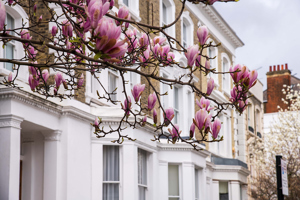Q&A: Statues and Ornaments in the Garden of a Listed Building
Question
My client’s family has owned a house for the last two centuries. It is Grade II* listed. When the house was built, statues and other ornaments were included by the architect in the landscaped garden. Over the last century, family members have bought other statues and ornaments. The house has to be sold to pay the inheritance tax bill for the late owner, who died last year. Are the children allowed to remove the statues or will some have to remain where they are and be included in the sale? The late owner gave his cousin a life-size statue of a terrier for his wedding present in 1975, which his mother had bought at a garden ornament auction just after World War II. It had been created by a recognised sculptor and had sat on the ground by the house for three decades up to 1975. The children have just discovered that it has a separate list entry. What should they do about that?
Answer
Each statue, ornament or other object will need to be assessed individually, to establish
- if it falls within the extended definition of a listed building or
- if it is listed as a building in its own right.
Those statues which have been there since before July 1948 and are part of the land or relate to the design of the listed building and its setting, will fall under the extended definition of listed building and will need to remain in place (unless listed building consent is obtained for their removal, which seems unlikely here). The statue of the small dog was there from 1945 to 1975, but it was never affixed to the building or land in its curtilage and the statue is easily movable, so it should not be deemed to be a building in its own right (or to fall within the extended definition). Hopefully the family could obtain consent for it to be delisted. The small statues bought by the family, which are not affixed to the building or land in its curtilage, which arrived there after July 1948 and which are not separately listed, could all hopefully be removed.
Explanation
The recent Supreme Court decision of Dill v Secretary of State for Housing Communities and Local Government and another [2020] related to a pair of 18th century lead urns, each resting on a limestone pedestal of a later date (each in turn resting on concrete slabs placed on the ground). The urns had been sold by Mr Dill in 2009, who was not aware of their listing. Five years later, the local authority discovered that the urns had been removed, then sent a letter to Mr Dill, informing him that listed building consent was required for their removal and threatening formal action. Mr Dill’s listed building consent application was refused and an enforcement notice was issued, requiring the urns to be reinstated. The case went all the way to the Supreme Court, which looked carefully at the status of garden ornaments, statues and other objects/structures and what factors determine whether they are protected by being “curtilage structures” to listed buildings, or “buildings” which could be listed in their own right. The judgment sets out the tests clearly (and very helpfully) for both ways in which a statue/ornamental object could be listed:
- The first is where objects or structures are treated as part of a listed building, if they are affixed to it or have been in its curtilage since before July 1948 and are either physically attached to the ground or directly related to the overall design/setting of the listed building and so form part of the building within the extended definition. This is distinguished from the circumstances in which an object or structure may qualify for listing as a building in its own right, as below.
- The general principle is that being on the list or not, determines whether or not a building is listed in its own right. But simply being on the list cannot make an object into a building and justify it being there. The Skerritts case test applies to this second strand, under which the size, permanence and degree of physical attachment of each individual object is assessed in evaluative terms, to work out whether the object is a building and so should be listed.
There may well be challenges to the listed status of statues and other ornamental objects which are independently listed, but which do not meet the second limb above and so are not “buildings” in their own right, on the back of this Supreme Court decision.
This article was written by Helen Hutton at Charles Russell Speechlys and was co-authored with Rupert Warren QC from Landmark Chambers. For more information, please contact Helen.



















